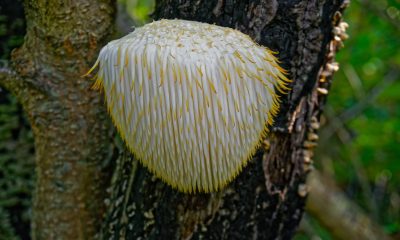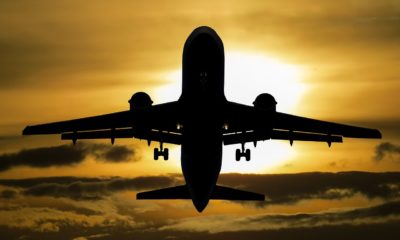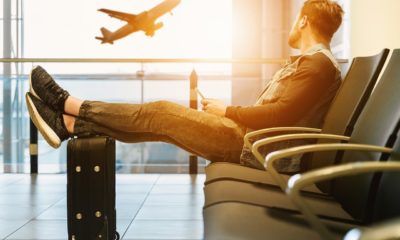Business
Here’s a cool new way to help you de-stress at the airport
Air travel can be really stressful, which could lead to a diminished travel experience. Southwest Airlines has devised an innovative way to de-stress at the airport.
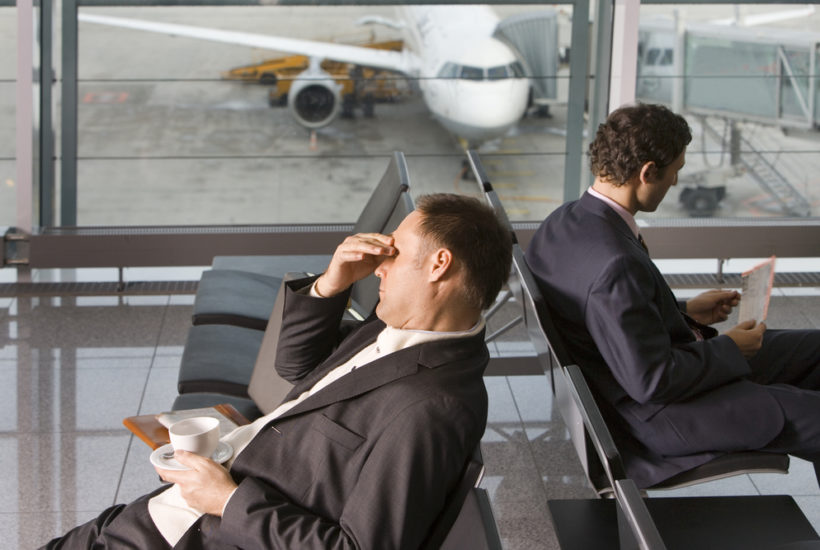
The next time you feel stressed out at the airport, look up. If you’re lucky, you’ll see painted clouds or a wall of vines and orchids, and you’ll hear the sounds of songbirds.
If you do, it means you’re flying out of Terminal 2 at Oakland International Airport. That’s where Kaiser Permanente, together with the airport and the terminal’s tenant, Southwest Airlines, has devised an innovative way to de-stress at the airport.
It’s just the latest way airports are helping travelers cope with the frustrations of flying. Other methods include yoga, art galleries, and spas. Taken together, these could define the airport of the future — not to mention help travelers cope with an increasingly stressful activity.
A new way to lessen the stress
“We all know flying is stressful,” says psychiatrist Don Mordecai, who is the national leader for mental health and wellness at Kaiser Permanente. “We wanted to find a way to lessen the stress.”
Late last year, Kaiser Permanente transformed a TSA checkpoint into a calming oasis. Highlights include a “living” green wall filled with plant species that clean indoor air naturally and provide a soothing ambient environment.
Large white clouds suspended from the atrium ceiling greet airport patrons. Messages on panels throughout the checkpoint encourage them to “breathe in,” “relax” and “thrive.” At the end of the checkpoint, there are “H2O to go” stations where passengers can fill their reusable bottles with filtered water for free.
The Kaiser Permanente de-stressing station was supposed to remain only until this month. But, after getting a positive reaction from guests, it’s been extended through the end of 2019.
“All of these elements are designed to lower the frustration travelers often feel and represent a much larger effort to improve mental health and wellness,” says Mordecai.
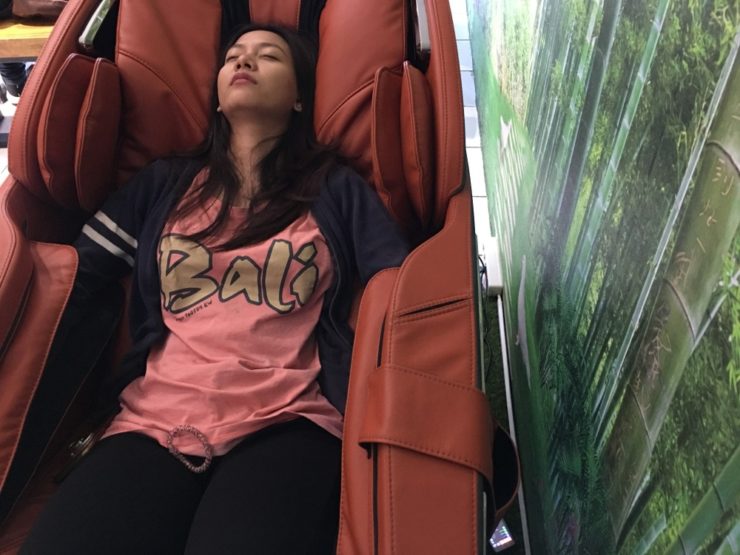
Other ways to de-stress at the airport
Many airports already have spas, massage facilities, coin-operated massage chairs, and rest zones.
Yoga in Chicago
At Chicago’s O’Hare International Airport, you’ll find a Yoga Room on the mezzanine level of the Terminal 3 Rotunda where you can “relax, reflect and recharge.” The 15-by-16-foot space features a sustainable bamboo wood floor, floor-to-ceiling mirrors on one wall, and exercise mats, as well as an area to place personal articles and garments.
Art in Tampa
Tampa International Airport has one of the most ambitious airport art programs in the United States, as well as a dedicated gallery. A visit to the airport museum offers you a space for quiet contemplation and exposure to local culture. In Tampa, that would be the works ofIcelandic printmaker Elva Hreiðarsdóttir.
Spa treatments everywhere
Thanks to businesses like XpresSpa, which offers massages and facials in airports from Los Angeles to Miami, patrons can find a moment to relax before or after their flights. Not to be outdone, airport hotels are also offering spa treatments for stressed-out passengers (the Grand Hyatt DFW is one of the best known).
Why de-stressing is important
As Kaiser Permanente’s Mordecai notes, not only is air travel stressful, but the stress level is increasing. From TSA screenings to smaller economy class seats, there’s no shortage of things to freak you out at the airport and in the air.
By the time travelers arrive at the security checkpoint, they’re already in full stress mode, he says.
“You’re worried,” says Mordecai. “Your body tends to tense up. You might be releasing stress hormones, your heart rate might be elevated. You might be breathing faster than normal.”
Worse, you’re surrounded by people who are also stressed out and probably irritable as well. All of that adds up and can lead to unhappy airport guests and a diminished travel experience.
Although Kaiser Permanente hasn’t done any scientific studies on the benefits of its de-stressing initiative, Mordecai told me the results are evident.
“There seems to be something about being in nature,” he says. “You’re in a place that’s familiar, less stressful.”
These de-stressing initiatives may be the future of air travel. If airports — and indeed, airlines — worked on ways to lessen the stress of air travel, imagine the possibilities. Would the David Dao incident have happened? What about any of the other recent dustups at the airport or on the plane, many of which, no doubt, were triggered by stress?
It’s hard to know the answer.
But this we know: clouds above the TSA checkpoint are better than no clouds. Yoga rooms and art galleries are better than empty rooms with a view of a ramp. If these de-stressing options aren’t part of the airport of the future, you may want to consider driving.
(Featured image by Air Images via Shutterstock)
—
DISCLAIMER: This article expresses my own ideas and opinions. Any information I have shared are from sources that I believe to be reliable and accurate. I did not receive any financial compensation for writing this post, nor do I own any shares in any company I’ve mentioned. I encourage any reader to do their own diligent research first before making any investment decisions.

-

 Crypto5 days ago
Crypto5 days agoBitcoin Traders on DEXs Brace for Downturn Despite Price Rally
-

 Business2 weeks ago
Business2 weeks agoDebt-Fueled Markets, Zombie Corporations, and the Coming Reckoning
-

 Crowdfunding2 days ago
Crowdfunding2 days agoFrom Confiscation to Cooperation: Funding Casa de la PAZ’s Social Transformation
-

 Impact Investing1 week ago
Impact Investing1 week agoGlobal Energy Shift: Record $2.2 Trillion Invested in Green Transition in 2024


